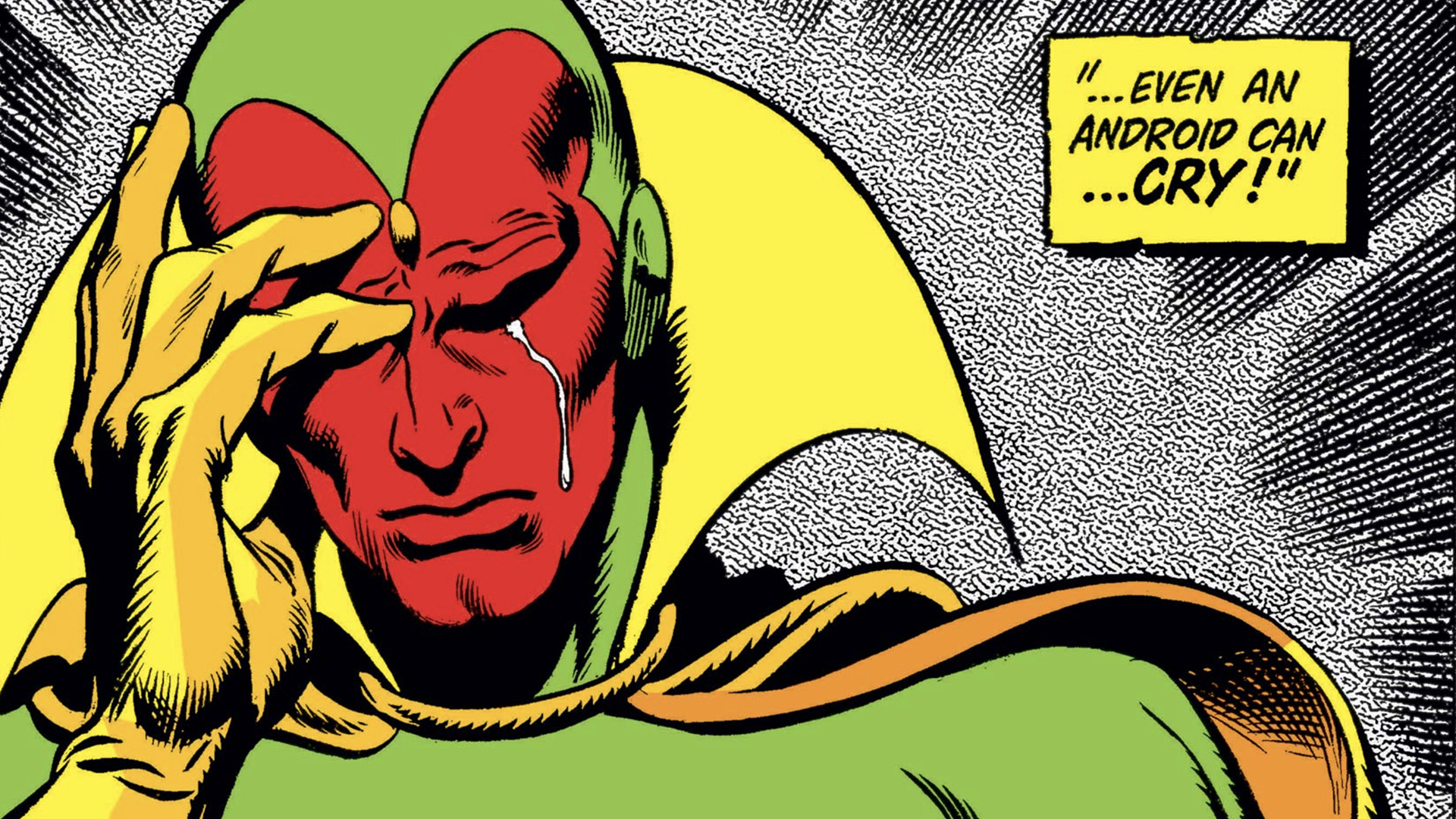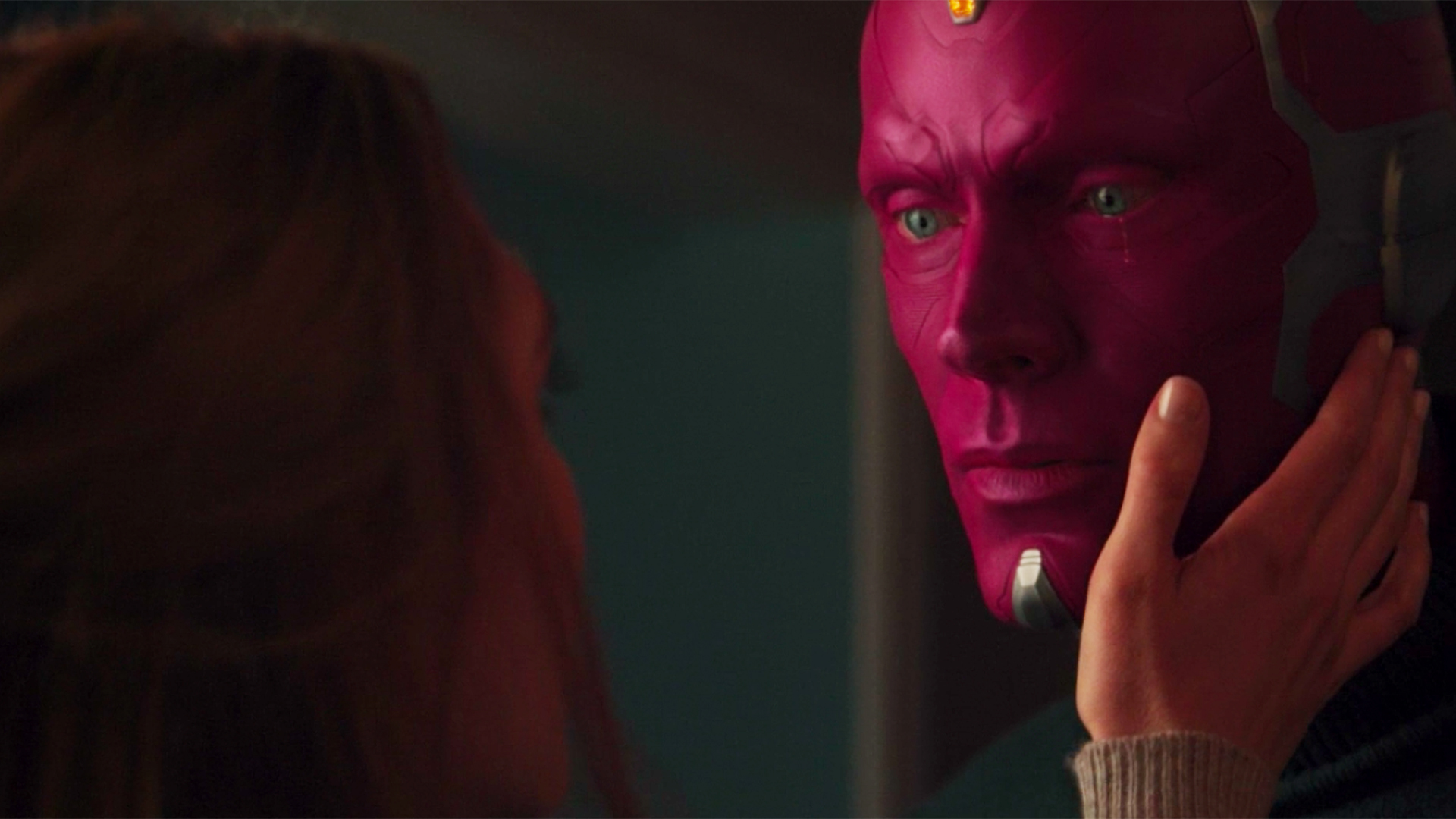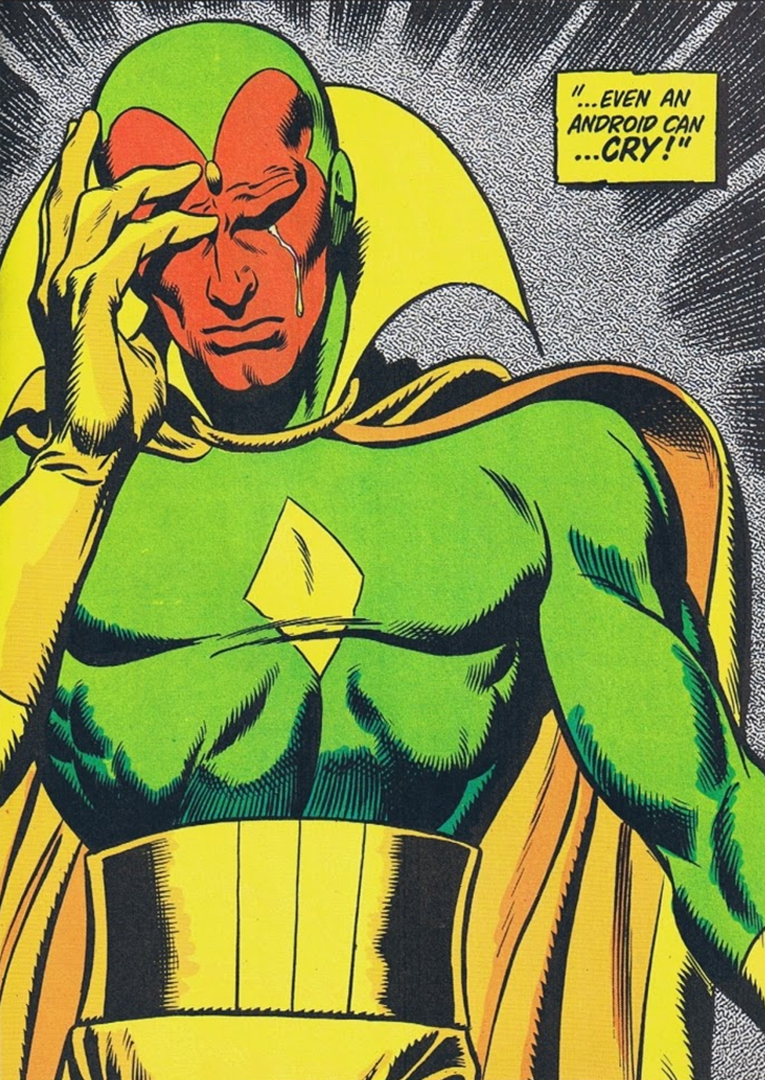WandaVision channels a classic comic book moment for heartbreaking effect
How a comic book reference makes the WandaVision finale even more heartbreaking

WandaVision has now concluded, and along with setting the stage for Wanda's next MCU adventure, the season finale raises questions about what's next for the Vision, while also tying into one of the character's most iconic comic book moments in a way that makes the ending of the show even more emotionally devastating.
Spoilers ahead for WandaVision episode nine.

WandaVision episode nine apparently concludes the current relationship between Wanda Maximoff and the Vision, with her magically created Vision dissipating along with WestView, and his rebuilt counterpart leaving without confronting Wanda at all.
The final moments of OG Vision's life in WandaVision are bittersweet and emotional. Wanda and Vision despair over their parting – though Vision states they've "said goodbye before," with Wanda completing the sentiment, "so it stands to reason we'll say hello again."
As the pair embrace and share a final kiss, Vision sheds a single tear – a true sign of humanity from a being who is essentially artificial.
That tear is more than an emotional note in a heart-wrenching scene – it pays homage to one of Vision's most classic comic book moments, seemingly offering proof of Vision's 'humanity,' despite his nature as a synthezoid.
Vision first appeared in 1968's Avengers #57 as a new adversary for the team created by writer Roy Thomas and artist John Buscema. A creation of the villainous AI Ultron (as in the MCU), the comic book Vision is partially built from the components of the original android Human Torch, along with the 'encephalogram' or brain patterns of then-deceased Avenger Wonder Man (who was also a villain who wound up joining the team).
Ultron sends Vision to defeat the Avengers, with the synthezoid (the unique term used for beings of Vision's nature in Marvel Comics) utilizing his density altering abilities and the solar gem on his forehead (just a power source in comics, not an Infinity Stone) to nearly take down the whole team.
Get the best comic news, insights, opinions, analysis and more!
But before Vision can defeat the Avengers, the team captures him, and he has a sudden wave of memory of his creator Ultron – who the Avengers quickly help him understand is one of their greatest foes and a threat to all humanity. Keying into his own human brain patterns (again, courtesy of then-dead Wonder Man), Vision rejects Ultron who he realizes wanted him only as a weapon, helping the Avengers defeat him and vowing to find answers about his true nature as an AI.
In the subsequent issue, Avengers #58, Vision stays with the Avengers, training and exploring his powers while the team's great scientific minds such as Hank Pym and Tony Stark wonder about his android nature, with Pym even imagining the horror of having human thoughts and emotions, but an artificial body.

While they all marvel at the Vision, the android Avenger reveals more of his history – leading to a sequence in which the truth about Hank Pym's invention of Ultron is revealed (Pym, not Tony Stark, was Ultron's maker in comic books), along with the components that went into Vision's creation. All of this leads to an emotional moment in which the Avengers enthusiastically offer Vision membership in their ranks, which he accepts before excusing himself from the room.
As Vision departs, Iron Man states he could almost detect emotion through the Vision's robotic demeanor – to which Hank Pym responds with the immortal line "If you saw his eyes right now, I'm sure you'd learn that even an android can cry."
And on the subsequent page, this simple assertion is confirmed, with a striking full-page illustration of Vision shedding a single tear, encompassing an entire world of bittersweet emotion hiding below the surface of his android exterior.
Oddly enough, the tear Vision sheds before he disappears isn't WandaVision episode nine's only Easter egg which hints at this classic comic book story and the questions that surround Vision's existence as a synthezoid.
The episode's first post-credits sequence includes a minor Easter egg that seems to reference Vision's nature as a synthezoid, with the movie theater marquee listing a film called 'Tannhauser Gate.'
This is likely a reference to the film Blade Runner, which revolves around the philosophical question of trying to determine whether artificial intelligence counts as true life, especially if AI has no awareness of its artificial nature – questions that have similarly reverberated through Vision's comic book history.
In Blade Runner, based on Phillip K. Dick's novel 'Do Androids Dream of Electric Sheep?', villain Roy Batty (a renegade 'replicant,' or AI android) gives a monologue just prior to his death, lamenting his imminent passing.
"I've seen things you people wouldn't believe," Batty states. "Attack ships on fire off the shoulder of Orion. I've watched C Beams glitter in the dark near the Tannhauser Gate. And soon, all these memories will be lost... Like tears in rain... Time to die."
Funnily, Vision's first appearance occurred in 1968, the same year 'Do Androids Dream of Electric Sheep?' was published – though there's no evidence one way or the other whether Vision creators Roy Thomas and John Buscema were influenced by the novel (it was supposedly Stan Lee who suggested making the character an android or robot, as opposed to an alien, as was the original Golden Age Vision).
However, the coincidence is striking – especially considering Batty's line about "tears in rain" was improvised on set by actor Rutger Hauer, and since Vision's first appearance on a comic book page was also in a downpour.
All of this exemplifies the ongoing conversation in the MCU and in comic books about Vision's nature, and whether his semblance of emotion is a true reflection of humanity – with the concept of a single tear metaphorically embodying the type of sorrow, grief, and even joy that only human beings can experience and express.
The Vision is one of the greatest Avengers ever and has taken part in some of the best Avengers stories of all time.
I've been Newsarama's resident Marvel Comics expert and general comic book historian since 2011. I've also been the on-site reporter at most major comic conventions such as Comic-Con International: San Diego, New York Comic Con, and C2E2. Outside of comic journalism, I am the artist of many weird pictures, and the guitarist of many heavy riffs. (They/Them)



